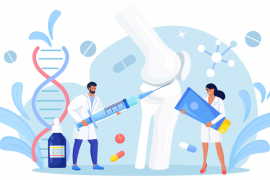Severe acid reflux, or gastro esophageal reflux disease (GERD), is a chronic disease that occurs when acid from the stomach flows into the tube connecting the mouth and stomach and irritates its lining. Symptoms include heartburn, regurgitation and belching.
According to the National Institutes of Health, your risk for GERD increases with age, family history, a high body mass index (BMI) and low physical activity levels. Nationally, it affects about 66 million Americans, 63% of which are women.
When we’re healthy, the lower esophageal sphincter serves as a one-way valve to allow foods and liquids to travel to the stomach, but prevents stomach contents like acid and bile from flowing back up. In GERD, this lower esophageal sphincter muscle is weak.
Taking antacids and making lifestyle changes like reducing stress, limiting spicy foods and caffeine and alcohol intake can help GERD, says Aaron Schwaab, MD, FACS, and board-certified general surgeon at Stoughton Hospital. Dr. Schwaab graduated from the University of Wisconsin Medical School in 1997 and did his residency at the University of New Mexico School of Medicine. He does surgeries for breast and colon cancers, hernias as well as many other procedures.
He also performs the LINX procedure, which is ideal for those who need long-term relief from GERD. LINX has been performed at Stoughton Hospital for three and a half years, with no removals or complications. A large group of Dr. Schwaab’s patients are now off of their heartburn medications.
The LINX Reflux Management System is a metal ring the size of a quarter. Its flexible shape of magnetic titanium beads allows food and liquids to go down, but prevents stomach contents from moving up. The surgery takes about an hour to complete, and patients typically return home the same day. It is also less invasive than other GERD surgeries.
“With other surgeries for GERD, a common side effect is gas, bloating and feeling uncomfortable — without being able to belch,” says Dr. Schwaab. “LINX does not have that side effect. It comes in multiple sizes, so it doesn’t change the stomach’s anatomy [functioning].”
Prior to surgery, patients see Dr. Schwaab for a consultation and discuss what they’ve done to manage their acid reflux. Then he does an upper endoscopy to look at the upper digestive tract. A pH study is done to measure the amount of acid in the esophagus to see if it’s well enough to tolerate surgery.
The tests, insurance approval and scheduling process take about two to three months. Stoughton Hospital’s intimate size means they can also provide highly individualized care to patients.
“It’s easier for patients to get a hold of us,” says Dr. Schwaab. “Patients can have one-on-one conversations with me, and I can support them through the whole process.”
Find information about the LINX procedure at stoughtonhealth.com/health-services/gerd. To make an appointment with Dr. Schwaab or to learn more, call Stoughton Health General Surgery Clinic at 608-873-2266.




